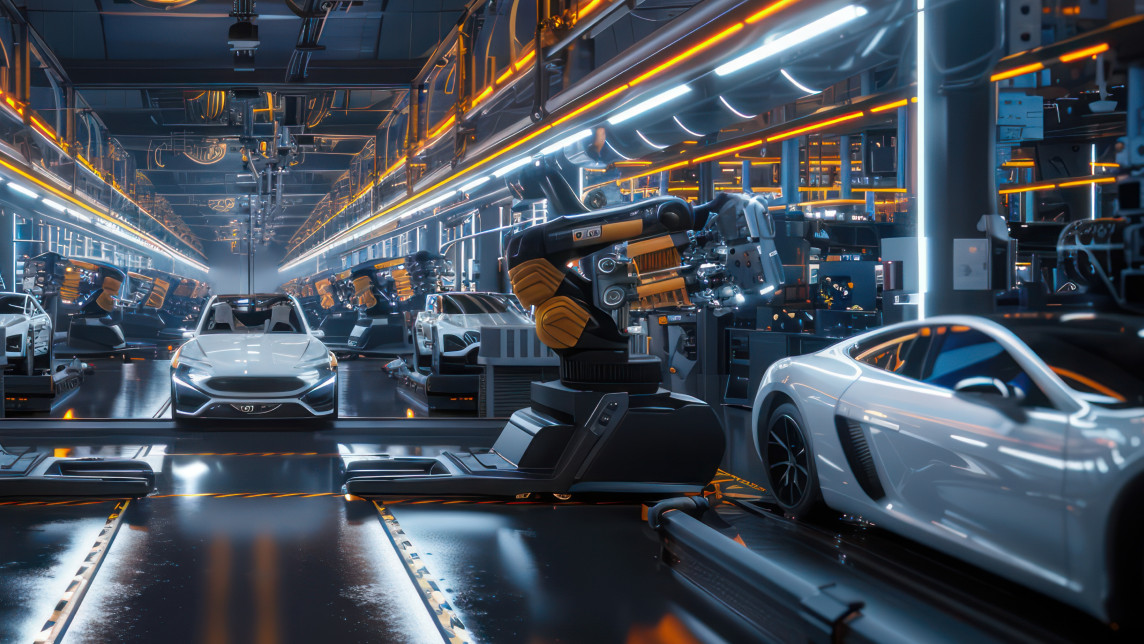Private 5G and generative AI may converge at the edge, but what is realistic now and into the future? RCR Wireless takes a closer look

Private 5G and generative AI complement each other in industrial settings, with private 5G providing high-speed, low-latency connectivity, which generative AI can leverage to analyze, predict, and create solutions for complex industrial challenges in smart manufacturing, healthcare, transport, logistics, and other industries.
RCR Wireless explores whether future convergence will take place at the industrial edge, especially since generative AI requires significant processing power — currently, a bottleneck in the cloud. Placing AI processing at the industrial edge, through private 5G, would reduce latency and enable faster, real-time operations.
Despite that potential, James Blackman in his first piece of a series on private 5G and generative AI, explores whether or not “these are the two biggest hype stories in industrial tech right now.” Currently, private 5G is building a head of steam in Industry 4.0., and generative AI is starting to transcend factory lines, finding application “in homes, offices, and the corridors of global power.” But the high point for AI, as with 5G, will be inside enterprises, where it will be required to be customized and dynamic, and where it promises to change the economy. To learn more, check out the article here.

Susana Schwartz
Technology Editor
RCRTech
AI Infrastructure Top Stories
AMD expects $100B in DC revenues by 2030: During its financial analyst day, AMD CEO Lisa Su said AMD will expand its AI data center revenues at a CAGR of more than 80% in the next three to five years. She also projects the global data center market will reach $1 trillion by 2030, up from $200 billion this year, with an expected CAGR of 40% during the period. The company also reaffirmed its product roadmap, announcing new releases for its MI450 AI chip series, featuring the company’s double-wide Helios rack.
Pioneering AI-powered 6G radio receivers: Nokia has designed an AI-powered 6G radio receiver that bypasses signal distortion and coverage issues inherent in 6G bands. Not only did the advanced AI-native receivers improve coverage by as much as 25%, but they also enable better throughput and higher energy efficiency so that base stations better process noisy and distorted signals. Nokia worked with Rohde & Schwarz’s to emulate real-world conditions in tests.
Dream team or hype — private 5G and generative AI: “All these AI data centers [will] be very expensive paper weights, if they don’t connect to anything,” said Daniel Lawson of Verizon Business, highlighting the importance of connectivity for AI to reach its full potential. In today’s RCR Wireless story, “Private 5G and generative AI – a dream match at the industrial edge?” James Blackman examines why $10 billion will be spent on private networks by 2030 and how the complement of generative AI will drive automation, intelligence, and flexibility in Industry 4.0.

AI-Powered Telecom Infrastructure
Supermicro, in collaboration with NVIDIA, delivers AI-powered infrastructure tailored for telcos, enhancing operational efficiency, network management, and customer experiences. Explore now
AI Today: What You Need to Know
Chevron natural gas-powered DCs: Oil and gas major Chevron has said it has selected West Texas as the region in which it will build its first natural gas-powered plant. The project is expected to produce 2.5GW by its third year of operation, and will likely be constructed separately from the grid to avoid competing with the electricity supply for the wider population. The company mentioned it’s in talks with a “premier customer,” but the name has not yet been disclosed.
Cisco winning over hyperscalers: Cisco booked $1.3 billion in AI orders from hyperscalers in Q1 and it expects more than $3 billion in revenue from those deals this year. Additionally, Cisco announced it received more than $200 million in orders from neocloud, sovereign, and enterprise customers. This demonstrates a significant acceleration for Cisco’s AI-centric portfolio. In the race for networking gear, Arista Networks and Nvidia have been the key players in powering AI data centers, but Cisco’s optics products are increasingly in demand for hyperscalers.
Tesla megapack batteries for DCs: Tesla is targeting AI data centers with massive Megapack batteries amid grid-strain fears. The company says $50B/GW for a 2-hour system over a 20-year lifetime is ‘outsized value’. For hyperscale AI data centers grappling with power fluctuations, Tesla claims the utility-scale batteries can help with GPU-intensive training runs, which are driven by thousands of high-performance accelerators. Those runs can fluctuate by as much as 90% at frequencies up to 30 Hz.
Anthropic partners with Fluidstack for U.S. AI: Anthropic announced a partnership with London-based AI cloud platform vendor Fluidstack to build new AI data centers in the U.S., with $50 billion earmarked for construction in Texas and New York. The facilities will be designed for maximizing efficiency for its workloads, as well as supporting its continued R&D around Claude fgenerative AI models and its emphasis on the enterprise market.
Microsoft announces AI ‘superfactory’: Microsoft CEO EO Satya Nadella announced “the world’s first super factory,” referring to interconnected data centers running on hundreds of thousands of Nvidia chips to power AI technology. Its Atlanta-based Fairwater 2 facility will be paired and connected with the first Fairwater site in Wisconsin, forming a “massive supercomputer,” which Nadella said is part of a “broader Azure footprint to create the world’s first AI superfactory…to serve any workload, anywhere,” no matter what the need is.
Controversy over TeraWulf’s New York DC: Tensions over crypto-based TeraWulf’s proposed data center in Lansing, New York continue to escalate as the company and property owner, Cayuga Operating Company, threatens legal against the Town of Lansing over alleged violations of public meeting laws. The Lansing Town Board is also considering passing a proposal that would delay construction on the data center.


